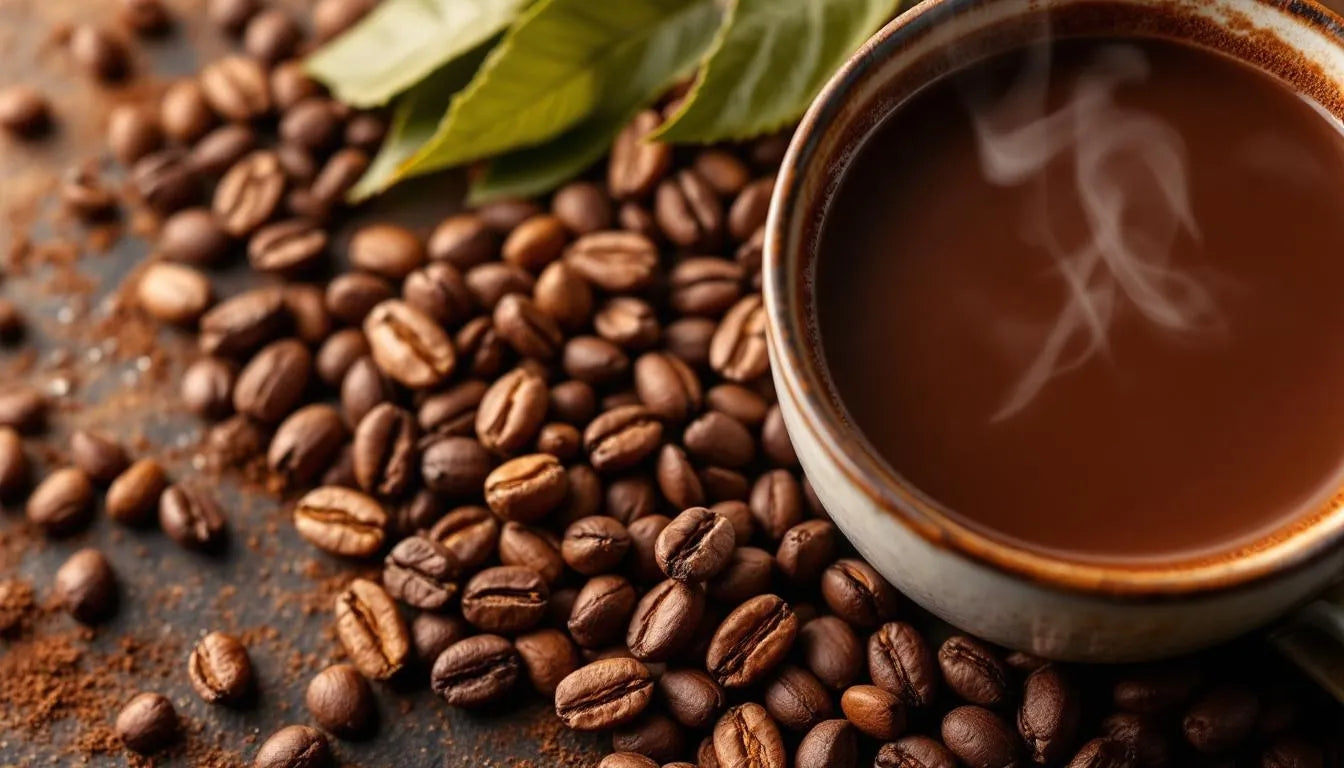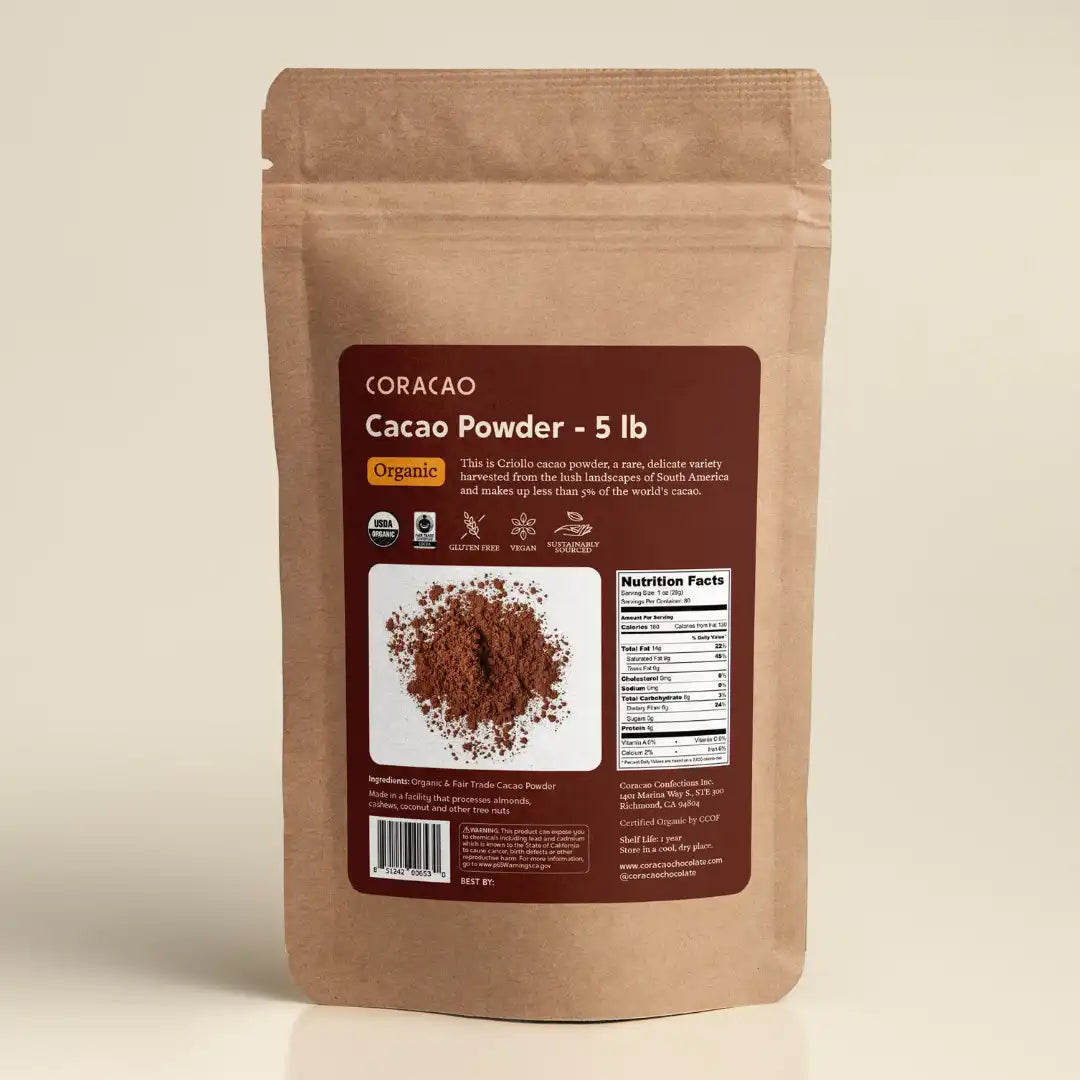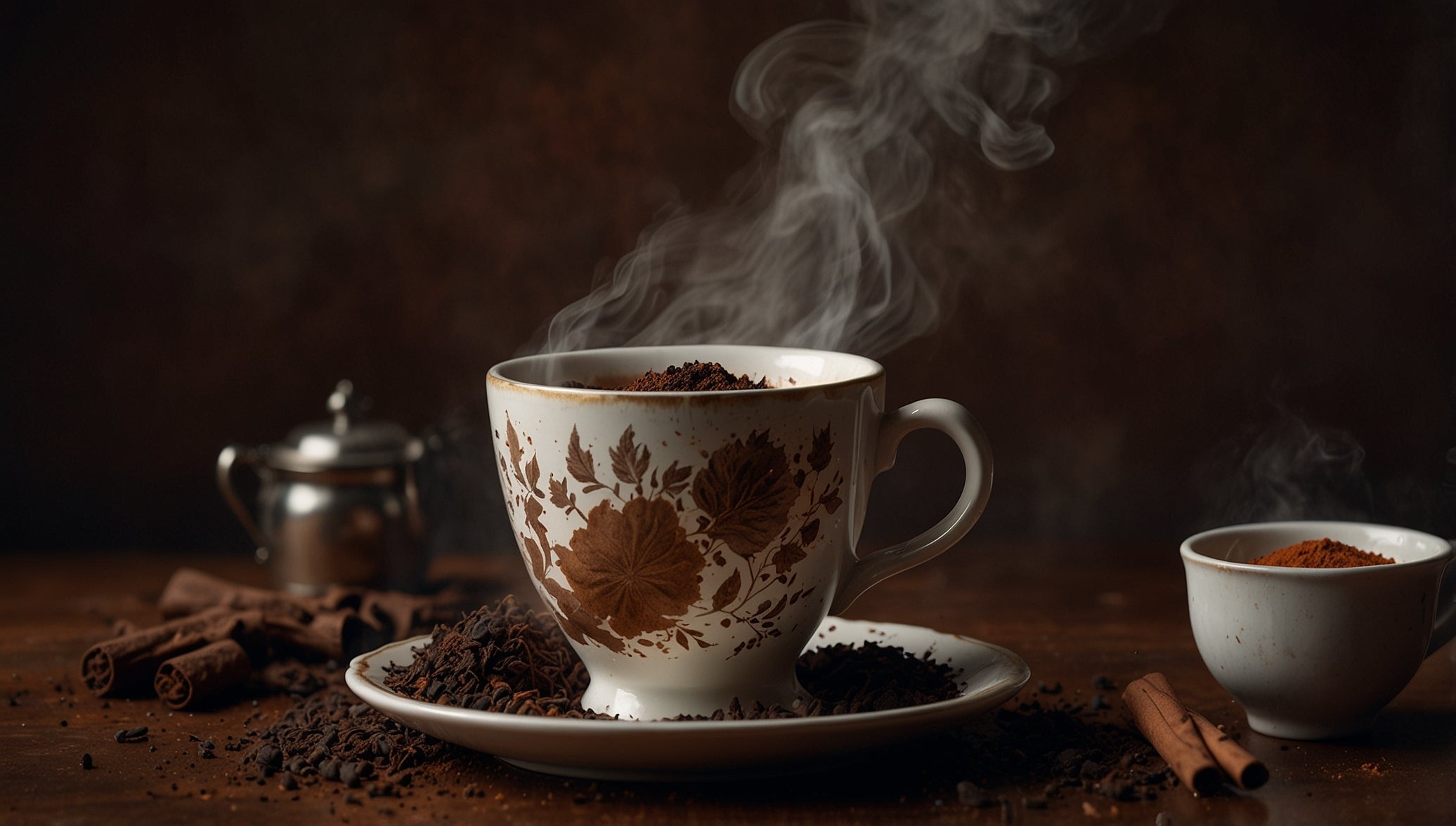
Does Cacao Have Caffeine? Understanding the Natural Energy in Your Favorite Chocolate Superfood
The Simple Answer: Yes, But There's More to the Story
Does cacao have caffeine? Yes, cacao powder contains small amounts of caffeine, but it is significantly lower than that found in coffee or tea. Raw cacao powder contains approximately 12 milligrams of caffeine per tablespoon, which is about 25% of what you'd find in a typical cup of coffee. However, the energy experience from cacao is remarkably different from coffee due to its unique combination of natural compounds that work synergistically to provide sustained, gentle energy without the typical caffeine jitters or crash.

The fascinating truth about cacao's energizing properties goes beyond simple caffeine content. While coffee delivers a quick caffeine hit that can lead to anxiety and crashes, cacao provides a more balanced energy experience thanks to theobromine, healthy fats, and over 100 other beneficial compounds that modulate how your body processes caffeine.
Comparing Caffeine Content: Cacao vs Coffee vs Tea
The Numbers That Matter
Understanding the caffeine content across different beverages helps put cacao's gentle stimulation into perspective. Here's a comprehensive breakdown of caffeine levels in common beverages:
- Raw Cacao Powder: 12 mg per tablespoon (5 grams)
- Brewed Cacao: 24 mg per cup (using 2 tablespoons)
- Coffee: 95-200 mg per 8 oz cup
- Black Tea: 40-70 mg per 8 oz cup
- Green Tea: 25-50 mg per 8 oz cup
- Hot Chocolate (commercial): 5-25 mg per 8 oz serving
Why Cacao Feels Different Than Coffee
One cup of cacao contained 80% less caffeine than a cup of filtered coffee. You can read more about the laboratory results related to caffeine content in cacao in our blog! The remarkable difference in how cacao affects your body compared to coffee isn't just about the lower caffeine content – it's about the complete nutritional package that cacao delivers.
Regional Variations in Caffeine Content
Interestingly, research has found significantly different caffeine levels in cacao from different countries, with Ecuador, Venezuela and Peru producing the "most caffeinated" cacao, while West African varieties tend to have lower caffeine content. This variation adds another layer of complexity to understanding cacao's stimulant properties.
The Theobromine Factor: Cacao's Secret Energy Weapon
Understanding Theobromine
While caffeine gets most of the attention, theobromine is actually the primary stimulant in cacao. Named after the botanical name for the cacao tree (Theobroma cacao, meaning "food of the gods"), theobromine provides unique benefits that make cacao an exceptional energy source.
How Theobromine Works Differently
Theobromine belongs to the same class of stimulants as caffeine but has distinctly different effects:
- Longer half-life providing sustained energy
- Gentler cardiovascular stimulation
- Mood-enhancing properties without anxiety
- Natural muscle relaxant effects
- Improved blood flow and circulation
The Synergistic Effect
Cacao's combination of caffeine and theobromine creates what scientists call a synergistic effect. This means the compounds work together to enhance mood, cognition, and even the taste of chocolate itself. This incomparable combo provides energy that feels more balanced and sustainable than coffee's isolated caffeine hit.
Why Cacao Provides Sustained Energy Without the Crash
The Role of Healthy Fats
Cacao has a high level of beneficial fats - the cacao butter - that slows down the effects of caffeine in the body. This natural time-release mechanism prevents the rapid spike and crash associated with coffee consumption. It's similar to the concept of bulletproof coffee with added fats, but cacao provides this benefit naturally.
Complex Nutritional Matrix
Cacao is more than just added fat - it's a very complex plant substance, with 100s of other molecules that also affect brain chemistry and energy levels. These include:
- Phenylethylamine (PEA) for mood elevation
- Anandamide, the "bliss molecule"
- Magnesium for nervous system support
- Iron for oxygen transport
- Flavonoids for cognitive function
Gentle on Your Nervous System
Unlike coffee's stimulation of the sympathetic nervous system (stress system), leading to frequent bouts of restless, "jittery" energy, cacao provides a more balanced stimulation that many describe as heart-opening and calming while simultaneously energizing.
Health Benefits Beyond Energy: Why Choose Cacao
Cardiovascular Support
The flavonoids in cacao help lower blood pressure, improve blood flow to your brain and heart, and help prevent blood clots. Products like Coracao's Rich Dark Drinking Chocolate - 60% provide these cardiovascular benefits in a delicious, warming beverage.
Antioxidant Powerhouse
Cacao contains more phenolic antioxidants than most foods. These compounds help protect cells from oxidative stress and support overall health. The antioxidants remain stable in properly stored cacao products, maintaining their potency over time.
Mood Enhancement Without Anxiety
The unique combination of compounds in cacao promotes the release of endorphins and enhances feelings of happiness and well-being without the anxiety often associated with coffee consumption. This makes cacao an excellent choice for those sensitive to caffeine's negative effects.
Managing Caffeine Sensitivity with Cacao
Starting Slowly
If you're sensitive to caffeine, start with small amounts of cacao powder to see how your body responds. Begin with just one teaspoon and gradually increase as your body adapts to the gentle stimulation.
Best Times to Consume Cacao
Morning consumption provides sustained energy throughout the day without interfering with sleep patterns for most people. Afternoon cacao can serve as a perfect pick-me-up without disrupting evening relaxation. Because of its lower caffeine content and balancing compounds, many people can enjoy cacao later in the day than coffee.
Combining with Other Foods
Pairing cacao with protein and healthy fats further moderates its energizing effects. Try adding cacao powder to:
- Smoothies with nut butter
- Oatmeal with seeds and nuts
- Energy balls with dates and almonds
- Yogurt parfaits with granola
Different Forms of Cacao and Their Caffeine Content
Raw Cacao Powder
The most concentrated form, raw cacao powder retains all its natural caffeine and theobromine. One tablespoon provides approximately 12 mg of caffeine, making it easy to control your intake. Coracao's Sugar Free Chocolate Bar Bundle offers the benefits of raw cacao in a convenient, delicious form.
Cacao Nibs
These crushed cacao beans contain similar caffeine levels to powder but release their energy more slowly due to their whole food form. They're perfect for adding crunch and gentle stimulation to trail mixes and breakfast bowls.
Drinking Chocolate
Prepared drinking chocolate typically contains 24-35 mg of caffeine per serving, depending on the concentration of cacao used. This makes it an ideal coffee alternative for those seeking a warming, energizing beverage with less caffeine impact.
Dark Chocolate Bars
The caffeine content in dark chocolate varies with the cacao percentage. A 70% dark chocolate bar contains approximately 25-35 mg of caffeine per ounce, providing energy along with the satisfaction of a sweet treat.

Making the Switch: Transitioning from Coffee to Cacao
Gradual Transition Strategy
For avid coffee drinkers, you don't have to worry about caffeine withdrawals when switching to cacao. Consider these approaches:
- Replace one cup of coffee with cacao daily for a week
- Gradually increase cacao while decreasing coffee
- Mix coffee and cacao initially for a familiar flavor
- Focus on the sustained energy rather than the initial kick
Preparing Delicious Cacao Beverages
The finished brew is very similar to black coffee as it is dark, strong, and bitter. However, the brewed cacao has a distinct chocolatey aroma. Enhance your cacao experience with:
- Plant-based milk for creaminess
- Natural sweeteners like dates or maple syrup
- Warming spices like cinnamon or cardamom
- Adaptogens like maca or reishi for added benefits
Maintaining Energy Throughout Your Transition
During the transition period, support your energy levels with:
- Adequate hydration
- Balanced meals with protein and healthy fats
- Regular movement and exercise
- Quality sleep habits
Special Considerations and Precautions
Pregnancy and Nursing
While cacao contains less caffeine than coffee, pregnant and nursing mothers should still monitor their intake. Consult with healthcare providers about appropriate amounts, typically staying under 200 mg of total daily caffeine from all sources.
Interactions with Medications
Theobromine and caffeine can interact with certain medications, particularly those affecting heart rhythm or blood pressure. Always consult with healthcare providers if you have concerns about interactions.
Individual Sensitivity Variations
Everyone processes caffeine and theobromine differently based on genetics, body weight, and tolerance. Pay attention to your body's signals and adjust intake accordingly. Some people may find they can enjoy Coracao's Berkeley Bar in the evening without sleep disruption, while others prefer morning consumption only.
Maximizing the Benefits of Cacao's Natural Energy
Quality Matters
Choose organic, minimally processed cacao products to ensure maximum retention of beneficial compounds. Raw cacao powder preserves more nutrients than Dutch-processed varieties, providing superior energy and health benefits.
Mindful Consumption
Unlike grabbing coffee on the go, consider making cacao consumption a mindful ritual. This approach enhances the stress-reducing benefits while maximizing the gentle energy boost.
Combining with Lifestyle Factors
Cacao's energy benefits multiply when combined with:
- Regular physical activity
- Stress management practices
- Adequate sleep
- Balanced nutrition
Conclusion: Embracing Cacao's Gentle Power
Does cacao have caffeine? Yes, but its modest caffeine content combined with theobromine, healthy fats, and numerous beneficial compounds creates an entirely different energy experience than coffee. Cacao offers sustained, balanced energy without the anxiety, jitters, or crashes often associated with high-caffeine beverages. Whether you're looking to reduce your coffee intake, seeking a gentler energy source, or simply want to enjoy the numerous health benefits of this ancient superfood, cacao provides an ideal solution that nourishes both body and mind.

Claire Bennett
I'm Claire, a chocolate lover and artisan based in a small town where I run a tiny home kitchen dedicated to exploring everything chocolate. From single-origin dark bars to creamy ganache and handmade truffles, I find joy in working with all types of chocolate. I believe chocolate has a story, and I love bringing that story to life through humble, heartfelt creations.



Leave a comment
This site is protected by hCaptcha and the hCaptcha Privacy Policy and Terms of Service apply.